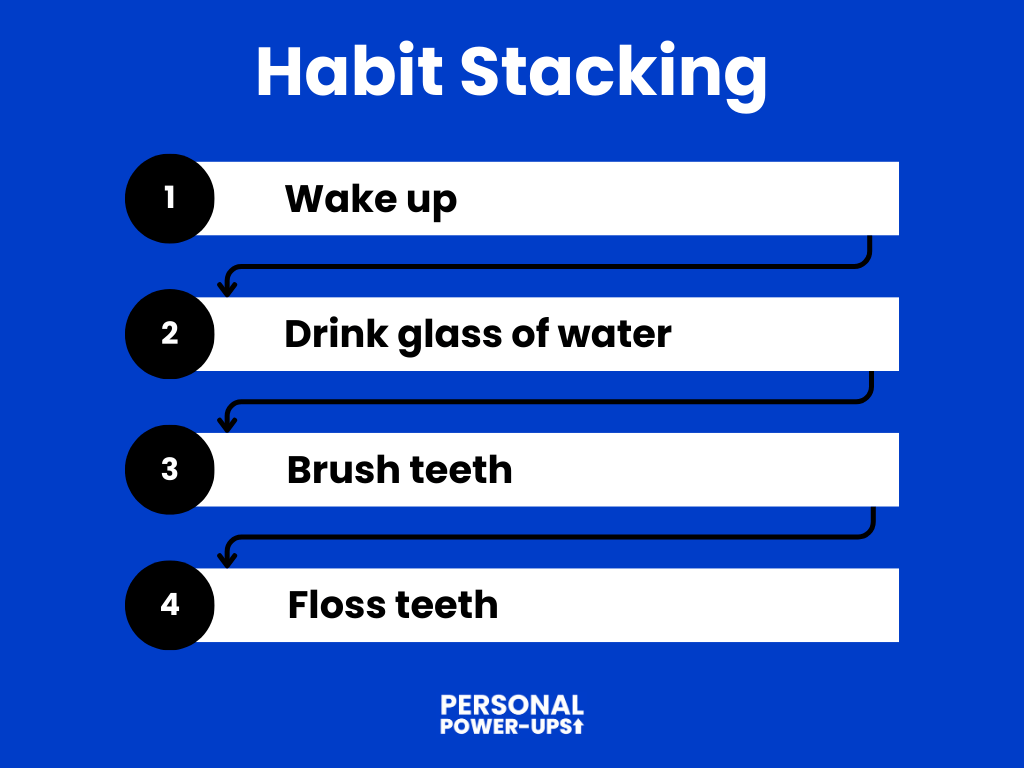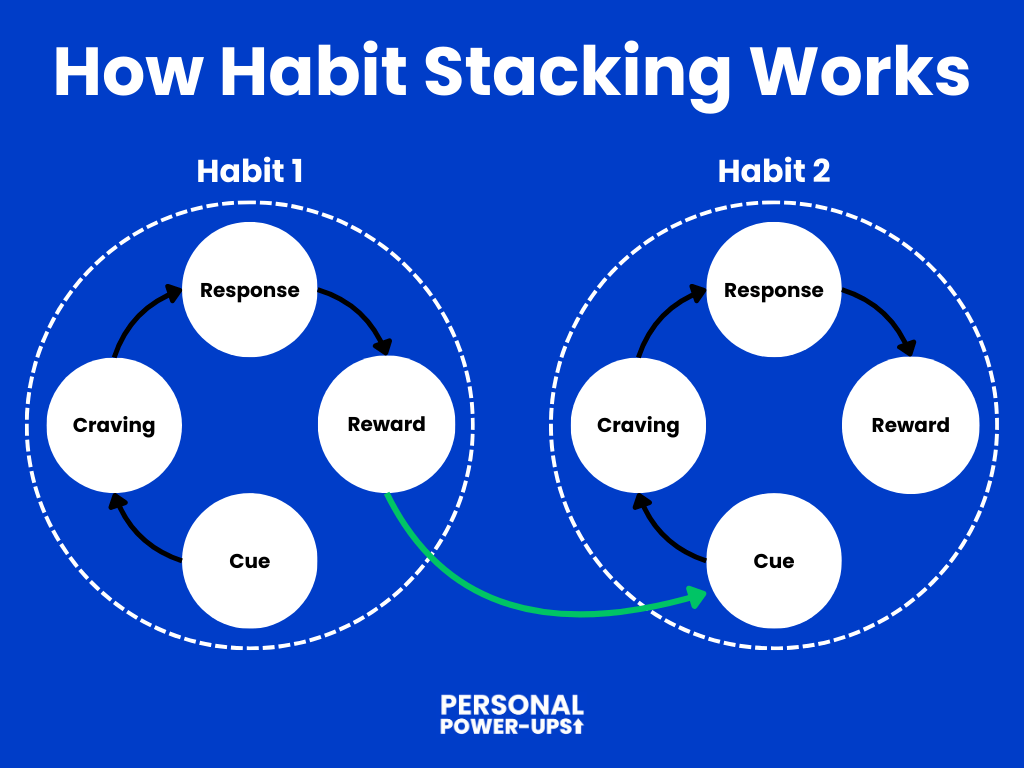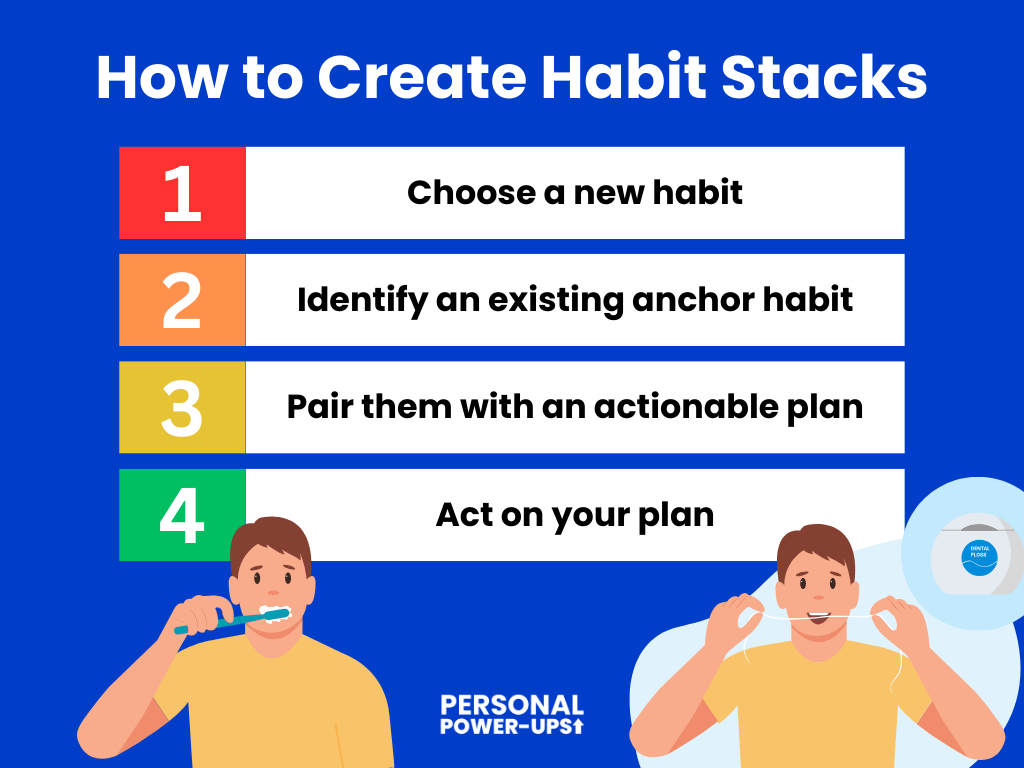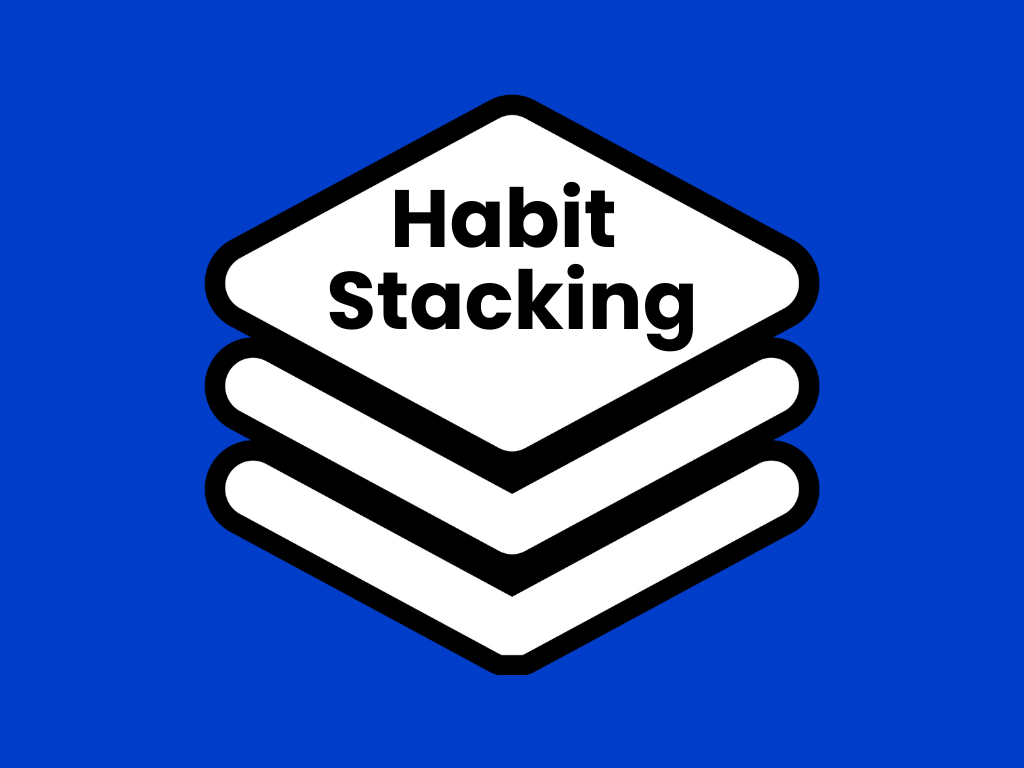Making good habits stick is hard, but what if I told you there’s a way to make it much easier? Enter habit stacking: add your new habit to your existing daily routine. In this article we’ll explore what habit stacking exactly is, how it works, and how you can create your own successful habit stacks. Let’s dive in!
Contents
What Is Habit Stacking?
Habit stacking is when you pair a new habit with an existing one. By making use of your existing routine, you make it a lot easier to make your new habit stick.
A great example of a habit stack is dental care: after I brush my teeth, I’ll floss. By pairing the two habits, you make it easier to remember to floss than when the flossing would be a habit that wasn’t paired with another habit.

▼ Ad
How Habit Stacking Works
Habits follow a pattern called the habit loop. This loop consists of the cue (the thing that initiates the habit), craving (the reason you want to do the behavior), response (the actual doing of the habit), and reward.
Habit stacking makes use of this habit loop by using the end of the loop of the first habit as the cue for starting the second habit. In short: you create a set pattern for your habits.
Not only does this make it easier to remember your habit, it also reduces decision fatigue by eliminating a choice you would’ve had to make at a later time (will I floss?). It also builds momentum, as once you start your habit stack, you’re in a flow that continues until the stack is done.
At first, you’ll have to put in some effort to make this habit stack work, but once you’ve performed the stack of habits several times, it’ll become second nature.

▼ Ad
How to Create a Successful Habit Stack
Step 1: Choose a New Habit
First, think about a new habit you would like to implement in your life. This could be anything from working out at the gym to reading more in the evening.
Be concrete when you formulate this new habit – it has to be clear what exact behavior you want. For example, “exercise more” is too vague. “Jog 2 miles in the morning” is much better.
Step 2: Identify an Existing Anchor Habit
Now identify all the existing anchors in your life. An anchor is an existing part of your routine that provides an opening to add a new habit to. For example, you may already have the routine to drink a glass of water after waking up. Drinking a glass of water can then be an anchor for another habit.
When choosing your anchor, it’s important that it’s a consistent anchor (otherwise your stack will fall apart) and you don’t overload an existing habit stack with too many habits at once.
Step 3: Pair Them With an Actionable Plan
After choosing a new habit and identifying an existing anchor to attach the new habit to, it’s time to create an actionable plan. Luckily, making such a plan is quick and easy. All you have to do is write down your intended habit stack. For example: “After I drink a glass of water in the morning, I will brush my teeth.”
Step 4: Act!
Now all you have to do is act. Perform your habits like you wrote down in your plan and stick with them. Though this may sound easy, it can be a challenge to make good habits stick. Here are several strategies to help you stick with your habit stack:
- Track your habit with one of our habit trackers.
- Use the 2-day rule to keep your streak going.
- Increase the ease of performing your routine with the 20-second rule or 2-minute rule.
- Analyze your habits and find improvements with our habit loop worksheet.

▼ Ad
Examples of Effective Habit Stacks
To help you get started with habit stacking, some examples of effective stacks:
Post-Workout Recovery Stack
Anchor Habit: Putting your gym bag away.
- As you put away your bag, stretch for 5 minutes.
- While stretching, drink a full glass of water.
- Afterward, log your workout progress in a fitness app or journal.
Why it works: The habit of returning home from the gym acts as a natural transition point. By linking hydration, stretching, and tracking progress, you’re reinforcing the recovery process, which boosts motivation for future workouts.
Office Start-Up Stack
Anchor Habit: Opening your laptop.
- After opening your laptop, clear your physical workspace for 1 minute.
- Then write a quick to-do list for the day.
- Before starting your first task, take a moment to visualize completing it successfully.
Why it works: Starting your workday with an anchor like opening your laptop is natural. This stack builds momentum for productivity by organizing your environment and focusing your mind.
Midday Productivity Stack
Anchor Habit: Finishing lunch.
- After lunch, set a 5-minute timer to plan your next key task.
- Before starting work again, take a quick walk around your home or office to refresh.
- When you return, clear your workspace before diving back into work.
Why it works: Lunch acts as a natural break in the day. This stack transitions you from a restful pause to a productive mindset, making it easier to avoid afternoon slumps.
▼ Ad
Conclusion: Start Stacking Today
Habit stacking is a simple and powerful way to create new routines and build a better life. Use the four steps in this article to create your own successful stacks! I encourage you to start today with one small habit stack, so you can experience the power of stacking yourself.
Stack your way to success – one habit at a time!




